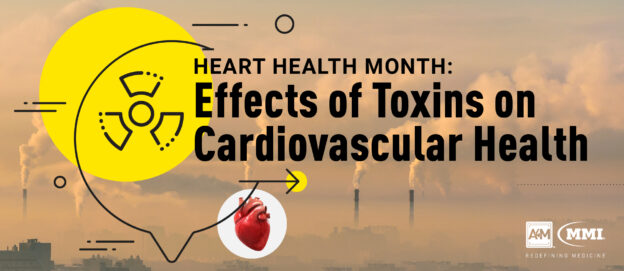The human body is vulnerable to a variety of environmental hazards which can have a noxious effect on overall health contributing to the development of cancers, neurological and neurodegenerative diseases, metabolic disorders, as well as reproductive and developmental disorders. Growing evidence suggests exposure to chemicals can elevate the risk of cardiovascular disease, a leading cause of death in the United States which costs the nation hundreds of billions of dollars annually.
Toxins Causing Cardiovascular Diseases
While nutritional habits, physical activity levels, smoking, and other lifestyle behaviors are considered major influences on cardiovascular risk, the contribution of pollutants and environmental toxins is increasingly merging as an impactful factor. Current literature has shown a significant association between exposure to environmental chemicals and cardiovascular disease (CVD), implicating persistent organic pollutants (POPs), low molecular weight hydrocarbons (LMWHCs), and many others as important risk factors. Exposure to such toxins can result in structural damage to the cardiovascular system and/or functional disturbances such as decreased cardiac output and the disruption of systemic arterial pressure autoregulation.
Over 80,000 chemicals are currently registered in the United States for commercial use yet the cardiovascular toxicity of only a few has been investigated thus far. Prior research reports that exposure to fine particles in ambient air has been associated with increases in cardiovascular mortality with clear correlations between particulate air pollution and ischemic heart disease, arrhythmias, and heart failure observed. These effects have been attributed to changes in the synthesis or reactivity of nitric oxide potentially caused by environmental oxidants or increased endogenous production of reactive oxygen species.
Investigating the Effects of Toxins on Heart Health
External contaminants can range from outdoor air pollution – particle pollution, gases, and other noxious compounds – to metals and elements such as lead, arsenic, and cadmium, all of which have been linked to a heightened incidence of cardiovascular disease. As part of a review of scientific literature published in BMJ, researchers evaluated the association of environmental toxic contaminants and the risk of cardiovascular disease.
Results of the study, which included 37 unique trials comprising a total of nearly 350,000 participants, point to a significant link between toxin exposure and CVD. The pooled relative risks for arsenic and lead were 1.30 for cardiovascular disease, 1.23 and 1.85 for coronary heart disease, and 1.15 for stroke. Meanwhile, the relative risks for cadmium and copper were 1.33 and 1.81 for CVD, 2.22 for coronary heart disease, and 1.72 and 1.29 for stroke. However, mercury had no reported statistically significant association with cardiovascular disease. The researchers also noted a linear dose-response relationship for arsenic, lead, and cadmium with cardiovascular disease outcomes; their findings reinforced the importance of environmental toxic metals in CVD risk.
Further studies are urgently needed to elucidate the connection between environmental toxins and human health; additional investigations.
> will need to identify the contribution of individual pollutants to specific aspects of cardiovascular disease as well as elucidate the complex physiological and molecular mechanisms underlying this correlation. Moreover, the scientific community aims to understand the susceptibility of specific population groups to such toxins and determine how pollutant exposure contributes to the absolute risk of heart disease.
This information is critical for the emerging field of environmental cardiology which is likely to expand as pollution concerns continue to impact population health. To better comprehend the broad spectrum of multi-factorial causes and risk factors linked to cardiovascular disease healthcare professionals are invited to enroll in our innovative Advanced Cardiology Certification program, accessible here.

